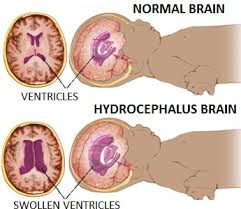Nursing Care Plan for Appendicitis Post Operative
Nursing Care Plan for Appendicitis Post Operative
Definition of Appendicitis
a. Appendicitis is a minor surgical diseases most often occur. Although appendicitis can occur at any age, but most often in young adults. Before the antibiotic era, the high mortality of this disease (Sylvia A. Price, 1994).
b. Acute appendicitis is the inflammation spreads to the surface of the parietal peritoneum the pain persists, more powerful and gain weight when moving. (Barbara C. Long, 1996)
c. Acute appendicitis is the most common cause of acute inflammation in the lower right quadrant abdominal cavity, the most common cause for emergency abdominal surgery (Brunner and Suddarth, 2001).
Clinical Manifestations of Appendicitis
a. The main complaint of appendicitis: pain. Abdominal pain lasting more than 6 hours must be taken into consideration. The pain is caused by the blockage of the appendix and its the same as the pain caused by intestinal obstruction. At first intermittent pain such as colic, because the innervation of the appendix and small intestine together. People feel when flatus or bowel movement will relieve the pain.
Manifestations of pain:
c. Vomiting is a characteristic, vomiting occurs after pain.
d. Usually constipation.
e. Frequent diarrhea especially in children, and especially on the client that the appendix is located in the nearby rectum.

Nursing Care Plan for Appendicitis Post Operative, as follows:
1. Assessment of post-operative data
The data on the client might get appendicitis authors include:
a. The identity of the client
b. Medical history
c. Past medical history
d. Physical examination
e. Patterns of daily life
f. Psychological data
NANDA Appendicitis
1. Risk for Infection
2. Acute pain
3. Risk for Fluid Volume
4. Anxiety
5. Knowledge Deficit
Definition of Appendicitis
a. Appendicitis is a minor surgical diseases most often occur. Although appendicitis can occur at any age, but most often in young adults. Before the antibiotic era, the high mortality of this disease (Sylvia A. Price, 1994).
b. Acute appendicitis is the inflammation spreads to the surface of the parietal peritoneum the pain persists, more powerful and gain weight when moving. (Barbara C. Long, 1996)
c. Acute appendicitis is the most common cause of acute inflammation in the lower right quadrant abdominal cavity, the most common cause for emergency abdominal surgery (Brunner and Suddarth, 2001).
Clinical Manifestations of Appendicitis
a. The main complaint of appendicitis: pain. Abdominal pain lasting more than 6 hours must be taken into consideration. The pain is caused by the blockage of the appendix and its the same as the pain caused by intestinal obstruction. At first intermittent pain such as colic, because the innervation of the appendix and small intestine together. People feel when flatus or bowel movement will relieve the pain.
Manifestations of pain:
- The beginning of the pain felt in the epigastrium, or around the umbilicus.
- Incurred local pain at the Mc. Burney. This inflammation will penetrate through the serosa and serous inflammation will spread to the peritoneum local parietale.
- Any movement will cause pain, severe pain and the pain turned into a sharp and continuous.
- In the event of perforation of the pain suddenly disappeared, but only briefly and then followed by intense pain throughout the abdomen due to peritonitis.
c. Vomiting is a characteristic, vomiting occurs after pain.
d. Usually constipation.
e. Frequent diarrhea especially in children, and especially on the client that the appendix is located in the nearby rectum.

Nursing Care Plan for Appendicitis Post Operative, as follows:
1. Assessment of post-operative data
The data on the client might get appendicitis authors include:
a. The identity of the client
- Name, tribe / nation, age, education, employment, income, address and Registration number.
b. Medical history
- History of the main complaints: Client: There is usually nausea, vomiting, rapid pulse, pain in the operated area.
- Incidence of complaints:Quarter of an hour after surgery.
- Nature of complaints: Since becoming aware of the client to feel the pain that persisted in the operated area.
- Another complaint came: Clients feel nausea, vomiting, and headache / dizziness.
c. Past medical history
- Lower right abdominal pain.
d. Physical examination
- The general situation: Client appears ill.
- Circulation: It may indicate respiratory bradycardia.
- Respiration: It may seem tachipnea clients because there is a sense of nausea and vomiting.
- Abdomen: abdominal distension may be tenderness in the area of incision.
- Extremities: There may be cyanosis.
e. Patterns of daily life
- Nutrition: There is a sense of nausea and vomiting, the client can not eat, maybe a bad skin turgor.
- Elimination :Bowel movements: The client has not / does not defecate, may not flatus. Urinating: There may be disorders of urination
- Hygiene: Regional visible incision closed operations (wound was sterile).
- Convenience: Clients seem grimace.
f. Psychological data
- Clients seem restless.
NANDA Appendicitis
1. Risk for Infection
2. Acute pain
3. Risk for Fluid Volume
4. Anxiety
5. Knowledge Deficit

Komentar
Posting Komentar